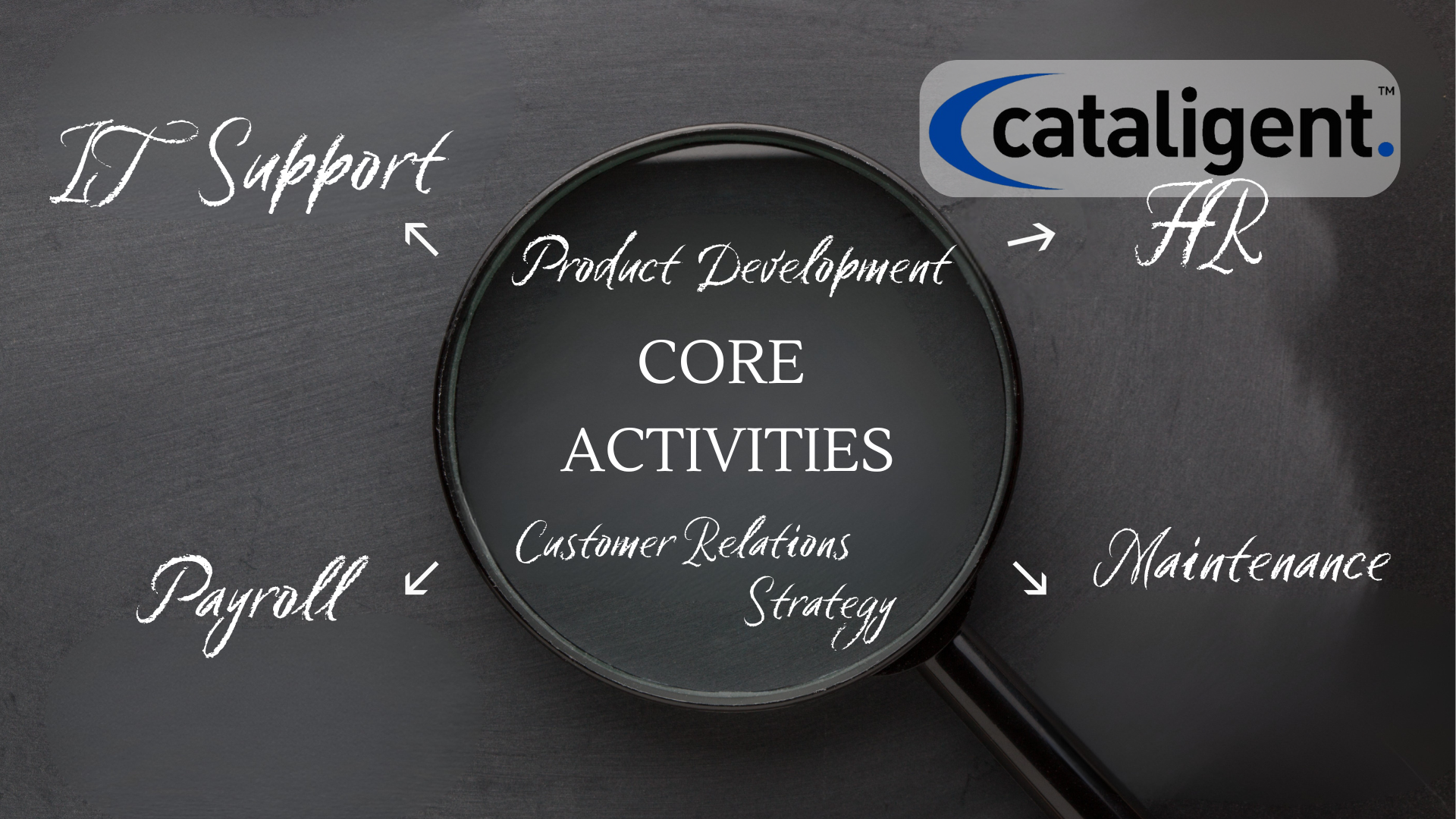Introduction
In today’s dynamic business environment, organizations must streamline operations to stay competitive. One of the most effective strategies for improving efficiency and maximizing resources is distinguishing between core and non-core business activities. By clearly defining these functions, businesses can allocate their internal resources more effectively while leveraging outsourcing opportunities for non-core tasks. This approach not only enhances productivity but also ensures that a company remains focused on its strategic goals.
This document explores the process of assessing and defining core versus non-core activities, outlining the benefits of this strategy, and providing a practical implementation guide for organizations looking to optimize their operations.
What It Involves
The distinction between core and non-core activities is fundamental to strategic decision-making. Core activities are those that directly contribute to a company’s mission, competitive advantage, and revenue generation. These functions are unique to the organization’s value proposition and require in-house expertise to maintain control and quality. In contrast, non-core activities, while necessary for smooth business operations, do not directly impact a company’s primary objectives and can often be outsourced to third-party providers.
Identifying Core Activities
Core activities are essential functions that define a company’s existence and distinguish it from competitors. These typically include:
- Product Development and Innovation – Activities related to designing, engineering, and refining products or services that set a company apart in the market.
- Strategic Management – Decision-making processes involving business expansion, competitive positioning, and long-term growth.
- Customer Relationship Management – Building and maintaining strong relationships with customers to enhance brand loyalty and engagement.
- Sales and Marketing – Efforts aimed at driving revenue growth through market research, branding, advertising, and promotional campaigns.
- Quality Control and Compliance – Ensuring products and services meet industry standards and regulations, protecting brand reputation and consumer trust.
Identifying Non-Core Activities
Non-core activities are necessary but do not contribute directly to the company’s primary objectives. These tasks can often be delegated to external service providers without compromising quality or efficiency. Common non-core activities include:
- Administrative Support – Routine clerical work, document management, and data entry.
- Payroll Processing and Human Resources (HR) Functions – Managing employee salaries, benefits, and compliance with labor laws.
- IT Support and Maintenance – Software updates, cybersecurity management, and technical troubleshooting.
- Customer Service and Call Center Operations – Handling customer inquiries, complaints, and support requests.
- Supply Chain and Logistics – Inventory management, procurement, and transportation coordination.
- Facilities Management – Cleaning, security, and maintenance of physical premises.
Benefits of Defining Core and Non-Core Activities
1. Improved Focus on Strategic Priorities
By outsourcing non-core activities, businesses can redirect internal resources toward core functions that drive growth and innovation. This allows leadership to concentrate on key initiatives rather than being burdened by routine administrative tasks.
2. Cost Efficiency and Resource Optimization
Outsourcing non-core functions can lead to significant cost savings by reducing the need for in-house staff, infrastructure, and training. External vendors often offer specialized services at a fraction of the cost, making it a financially viable option.
3. Access to Specialized Expertise
Third-party service providers are often experts in their respective fields, ensuring high-quality execution of non-core tasks. Companies can benefit from the latest industry best practices, technology, and innovations without investing in additional training or resources.
4. Increased Agility and Scalability
Businesses can scale operations more effectively when non-core activities are outsourced. Whether expanding or downsizing, external partners can adjust services to match the company’s evolving needs, providing greater operational flexibility.
5. Enhanced Risk Management
Outsourcing can mitigate risks associated with regulatory compliance, cybersecurity threats, and operational inefficiencies. Professional vendors are well-versed in industry regulations and best practices, reducing the likelihood of legal or financial complications.
Implementation Guide: How to Assess and Define Core vs. Non-Core Activities
Step 1: Conduct a Business Process Audit
A thorough audit of business processes is the first step in classifying activities as core or non-core. This involves:
- Mapping out all existing business functions and workflows.
- Identifying key performance indicators (KPIs) for each process.
- Evaluating the impact of each function on revenue generation, customer satisfaction, and strategic goals.
Step 2: Classify Activities Based on Strategic Importance
Once all business functions are identified, categorize them into core and non-core activities using the following criteria:
- Strategic Importance – Does the activity contribute directly to the company’s mission and long-term success?
- Competitive Advantage – Does the function differentiate the company from competitors?
- Operational Necessity – Is the task essential for daily business operations, or can it be outsourced without disrupting workflow?
Step 3: Identify Outsourcing Opportunities
For non-core activities, determine which tasks can be outsourced to improve efficiency and reduce costs. Consider:
- The availability of external vendors with expertise in the specific function.
- Cost comparisons between in-house execution and outsourcing.
- Potential risks and challenges associated with third-party service providers.
Step 4: Select Reliable Outsourcing Partners
When choosing an outsourcing partner, conduct due diligence to ensure credibility, reliability, and quality. Factors to consider include:
- Reputation and track record in the industry.
- Compliance with industry standards and regulations.
- Service level agreements (SLAs) that define performance expectations.
- Data security measures to protect sensitive business information.
Step 5: Implement and Monitor Outsourced Functions
Once outsourcing agreements are in place, establish a robust monitoring system to ensure seamless integration and performance tracking. This involves:
- Regularly reviewing service provider performance against agreed-upon metrics.
- Maintaining open communication with vendors to address concerns and improvements.
- Periodically reassessing the outsourcing strategy to align with evolving business needs.
Conclusion
Defining core versus non-core activities is a crucial step in optimizing business operations. By identifying essential functions and outsourcing non-core activities, organizations can enhance efficiency, reduce costs, and focus on their strategic objectives. Implementing a structured approach to this classification ensures businesses leverage their resources effectively while capitalizing on external expertise for non-core functions. As companies continue to evolve, regularly reviewing these classifications will help maintain operational agility and competitive advantage in an ever-changing market.

